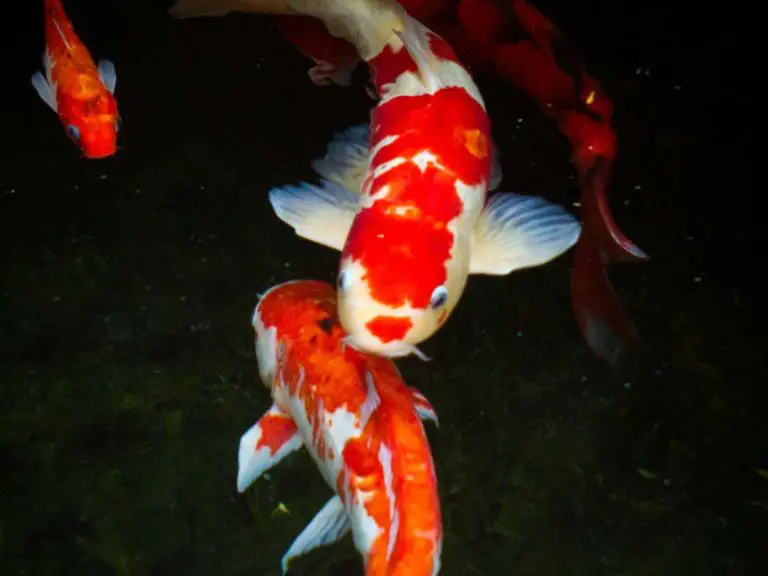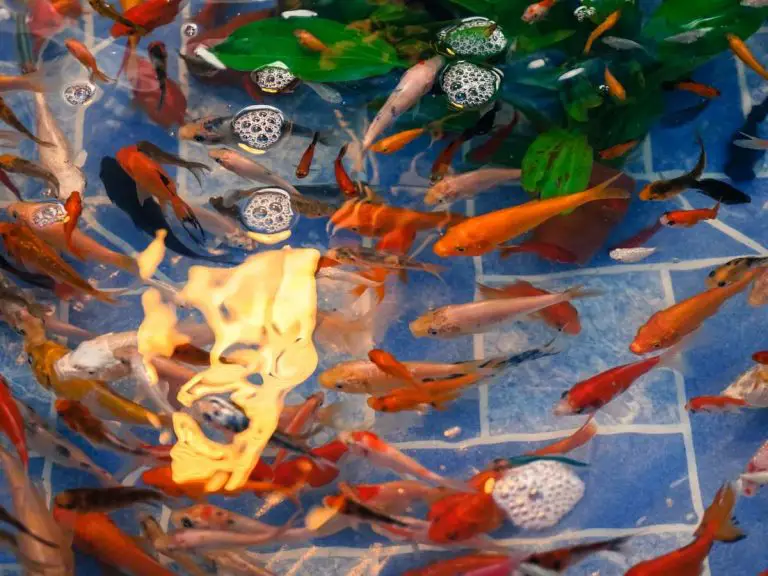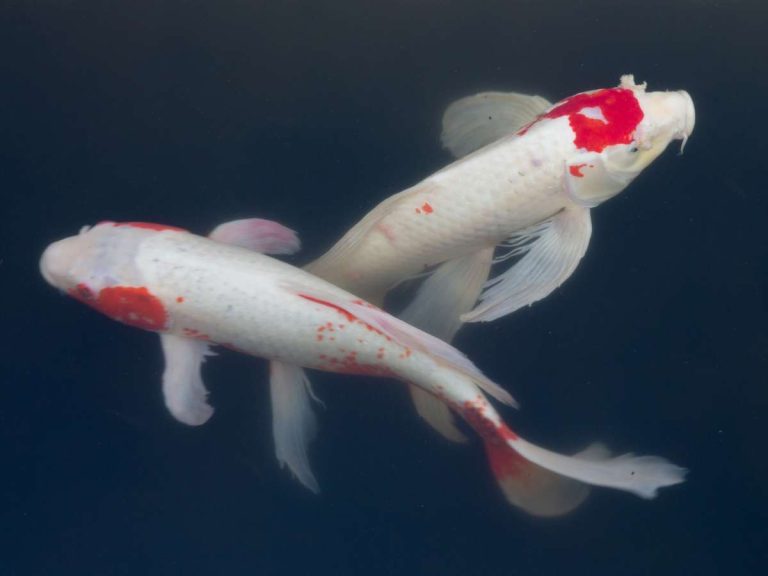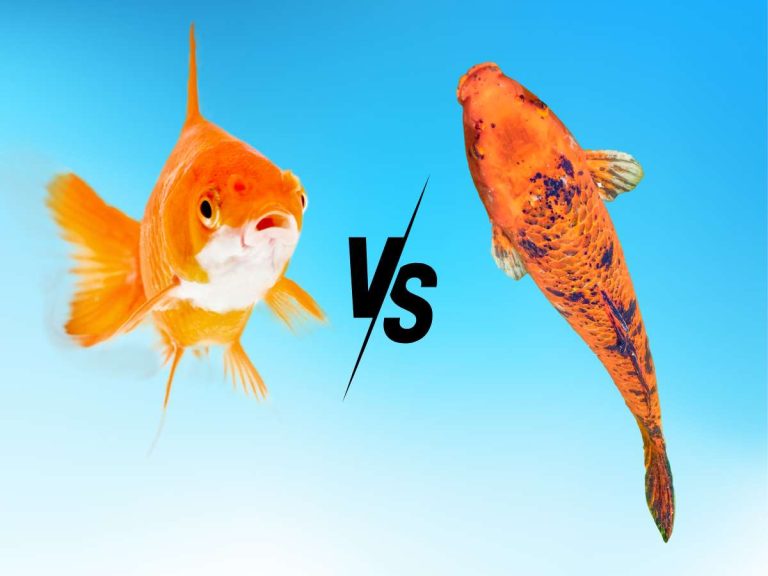Why is My Koi Pond Foamy? Can I Fix It?
Wondering why your koi pond has suddenly become foamy? Don’t worry – this is like a right of passage for many backyard pond enthusiasts.
Foam in koi ponds can be caused by a variety of factors, ranging from overfeeding to algae blooms, poor water quality, and chemicals use. In some cases, insufficient aeration could also be the culprit behind the foam. Foam can be harmful to koi and therefore must be addressed.
If you want to get rid of the foam on your pond, then you’ll need to fist identify the underlying cause. In this article, we’re covering how to do just that, In this article, along with how to fix it and prevent it from happening in the first place.
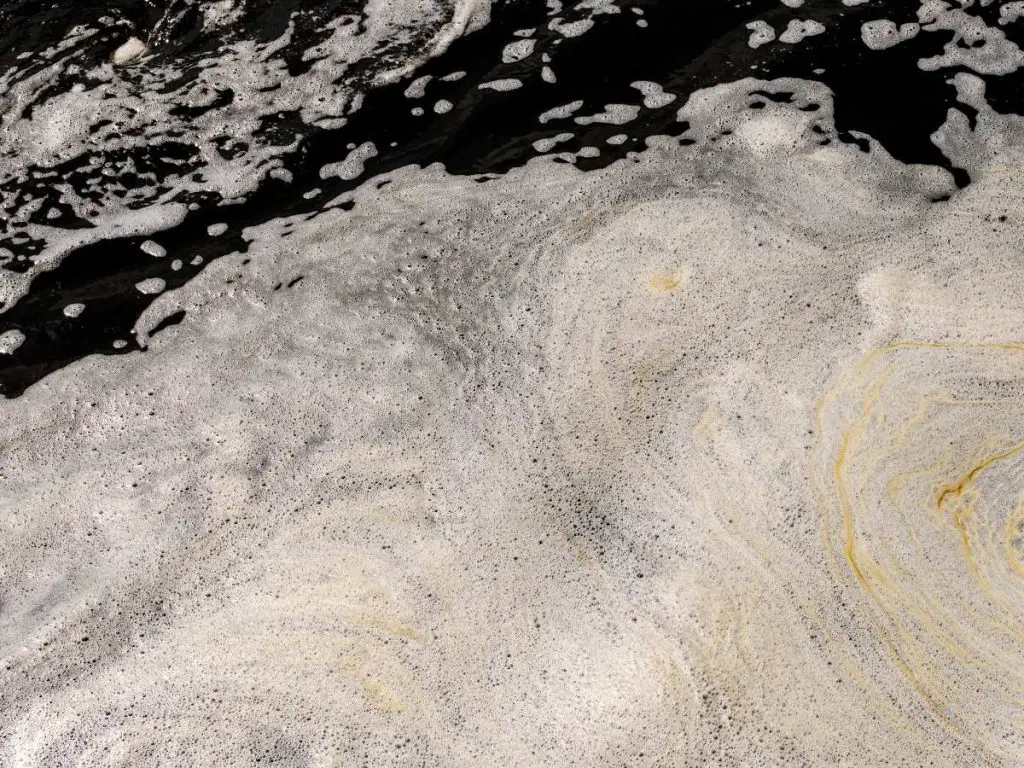
Understanding Foam in Koi Ponds
The layer of foam that you sometimes see on the surface of your koi pond is a common issue which can often be indicator of poor water quality and a sign of an underlying problem.
This foam is a buildup of organic matter, such as oils, proteins, and other substances, on the surface of the water. It’s often seen in the early morning or after feeding when there’s an increase in organic matter in the water.
Several factors can contribute to the formation of foam in koi ponds.
First, overfeeding is often the culprit, as excess food can lead to a buildup of organic matter. An algae bloom can also contribute to foam formation due to the organic compounds produced by the algae.
Poor water quality, the use of chemicals, and insufficient aeration can all make foam more likely to occur too.
However, whatever the underlying cause, foam can lead to health problems for your koi fish. This is why it’s important to understand the causes and effects of foam in your pond.
Is pond foam safe for fish?
Foam in koi ponds can have a negative impact on the health of your fish.
First up, the foam itself can clog the gills of koi, making it more difficult for them to breathe.
It can also lead to a decrease in oxygen levels, further affecting the fish’s respiration.
Finally, foam can also indicate poor water quality, which can lead to other health issues for your koi fish.
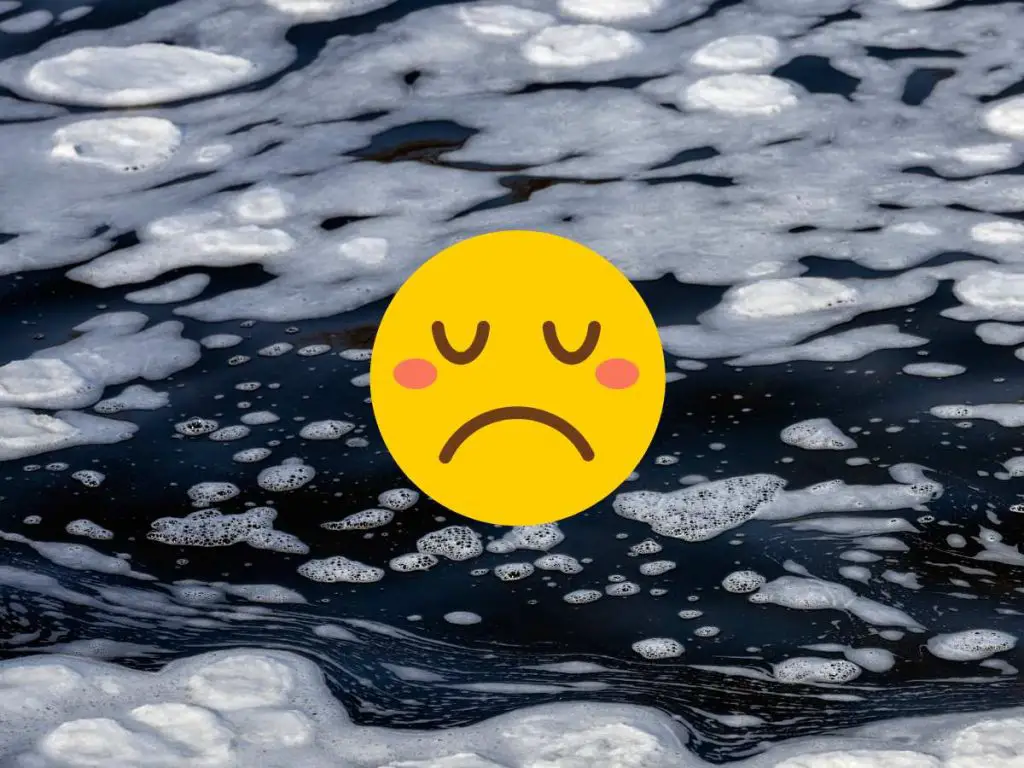
Why is my koi pond foaming?
When you notice foam in your koi pond, the first step to fixing the problem is identifying what is causing it. Let’s take a look at some of the common culprits.
Overfeeding
Koi fish are voracious eaters, but too much food can lead to excess foam in your pond. When uneaten food falls to the bottom of the pond, it can decompose and create foam. To prevent overfeeding, make sure to only feed your fish what they can eat in a few minutes and remove any excess food.
Algae Bloom
Algae is a common issue in koi ponds, and when it blooms, it can create foam on the surface of the water. This is because algae releases organic matter that can accumulate and form foam. To prevent algae blooms, make sure to regularly clean your pond, maintain proper water quality, and use an algaecide if necessary.
Poor Water Quality
When the water quality in your koi pond is not ideal, it can create foam on the surface of the water. This can be caused by high levels of dissolved organic matter, high pH levels, low oxygen levels, and other factors. Regular water testing can help you identify any issues with water quality so that you can address them promptly.
D. Use of Chemicals
Some chemicals can create foam in koi ponds. This includes detergents, chemicals used to remove chlorine, and other cleaning agents. To avoid creating unnecessary foam, make sure to limit your use of chemicals in and around the pond.
| Chemical/Agent | Description | Impact on Koi Ponds |
|---|---|---|
| Detergents | Commonly used for cleaning and often contain surfactants. | Can cause excessive foam when introduced to pond water. Harmful to koi and can disrupt the pond’s natural balance. |
| Chemicals used to remove chlorine | Often used to treat tap water before adding to a pond. | While they neutralize chlorine, some can cause foaming if overused. It’s essential to use them as per recommended dosages. |
| Cleaning agents | General products used for cleaning surfaces and equipment. | Residue from these agents can lead to foam formation when they come in contact with pond water. Always rinse equipment thoroughly after cleaning. |
It’s crucial to be cautious when using any chemicals or cleaning agents around koi ponds. Even small amounts of residue can lead to significant water quality issues, including foam formation. Regular monitoring and maintenance can help in preventing such issues and ensuring the health of the koi.
Insufficient aeration
Proper aeration is essential for maintaining a healthy koi pond. When there is not enough oxygen in the water, it can create foam on the surface. You can improve aeration by adding fountains, waterfalls, or other water features to your pond, or by using aeration equipment.
How to Get Rid of Foam in Koi Pond
So, you’ve got some foam in your koi pond, and now you’re wondering how to get rid of it. The good news is that there are several methods you can try to reduce or eliminate the foam. Here are some of the easiest and most effective methods.
Regular Skimming
One of the easiest and most effective ways to reduce foam in your koi pond is to skim it regularly. Use a net to remove any floating debris, foam, or scum from the surface of the water. This will not only reduce the foam but also improve the overall cleanliness of your pond.
Water Change
If the foam is caused by poor water quality, a water change may be necessary. Replace up to 25% of the water in your pond with fresh, clean water. This will dilute any excess nutrients in the water and help to improve its quality.
Use of Beneficial Bacteria
Beneficial bacteria can help to reduce foam by breaking down organic matter in your pond. You can purchase bacterial supplements specifically designed for koi ponds. These supplements will help to establish a healthy bacterial population in your pond, which will help to reduce foam and improve overall water quality.
Use of Algaecides
If the foam is caused by an algae bloom, an algaecide may be necessary (be sure to get one specifically designed for koi ponds). These products will help to kill off any excess algae that may be causing the foam.
Proper Aeration
An insufficient level of aeration can lead to foam in your koi pond. To fix this problem, you can invest in a high-quality aeration system. This will introduce oxygen into the water and help to reduce foam, as well as improve overall water quality and create a healthy environment for your koi fish.
You should be able to reduce or eliminate foam in your koi pond by using these methods.
That said, remember that prevention is always the best approach.
By following good pond maintenance practices, you should be able avoid many of the problems that lead to foam in the first place.
Preventing Foamy Koi Pond
Prevention is key when it comes to ensuring your koi pond remains foam-free. While fixing a foam problem is usually do-able, it is always better to avoid it in the first place.
Here are some important steps you can take to prevent foam from appearing in your koi pond.
Proper Feeding
One of the most common causes of foam in koi ponds is overfeeding. This happens when koi owners feed their fish more than they need. The excess food then creates a buildup of waste, which causes foam. To prevent this from happening, make sure you are feeding your koi the right amount of food. Use a small amount at a time and wait for them to eat it before adding more.
Avoid feeding them too often or too late in the day as well.
Regular Cleaning and Maintenance
To prevent foam from developing, you need to keep your pond clean. This means regularly cleaning out debris like leaves and uneaten food. Scrubbing the sides of the pond can also help.
Additionally, use a pond vacuum to keep the bottom of the pond clean.
Make sure you are also regularly checking the filter and cleaning it when needed.
Monitoring Water Quality
Keeping the water quality in your pond at optimal levels can help prevent foam from appearing. Use a water testing kit to check the pH, ammonia, and nitrite levels in the water. If they are not at proper levels, take appropriate action to fix them. You may need to add chemicals or use an algae cleaner.
Limiting Chemical Use
Chemicals are often used in koi ponds to kill algae and other unwanted growths. However, using too many chemicals can cause more harm than good. Chemical buildup can cause foam in the water, which can harm your koi fish. Limit the amount of chemicals you use in your pond. If you must use them, make sure to follow the instructions on the package.
Using Aeration Equipment
Aeration equipment is an excellent way to prevent foam in your koi pond. It delivers oxygen to the water, keeping it fresh and healthy for your fish. Additionally, aeration equipment helps keep the water circulating. This circulation helps eliminate stagnant spots where foam can build up.
| Equipment | Description | Benefits for Koi Ponds |
|---|---|---|
| Air stones | Porous stones that produce fine air bubbles when connected to an air pump. | Provides efficient oxygen diffusion, ensuring even distribution of oxygen throughout the pond. |
| Bubble diffusers | Devices that release a stream of small air bubbles into the water. | Enhances oxygen levels and promotes better gas exchange, beneficial for koi health. |
| Air pumps | Mechanical devices that pump air into the pond, often used with air stones or diffusers. | Ensures continuous airflow, vital for maintaining proper oxygen levels, especially in densely stocked ponds. |
| Aerator fountains | Fountains that spray water into the air, increasing surface agitation. | Beautifies the pond while improving oxygenation. The splashing action increases gas exchange at the surface. |
Ultimately, aeration is crucial for maintaining a healthy environment in koi ponds. Proper oxygenation supports koi health, promotes beneficial bacteria growth, and helps in breaking down waste. Using the right aeration equipment can make a significant difference in the overall health and vitality of the pond ecosystem.
Caring for Koi Fish in a Foamy Pond
Koi fish are beautiful creatures that require a lot of care and attention. If your pond is foamy pond you’ll want to keep a close eye on their behavior to ensure they’re healthy and happy. I mean, how would you feel if the air was actually foaming???
Here are some tips for caring for your koi fish in a foamy pond to make their lives a bit better.
Monitoring Fish Behavior
The first thing you should do when your pond develops foam is to observe your koi fish. If they seem lethargic or are not eating, it could be a sign of poor water quality.
You should also watch for signs of disease, such as lesions or discoloration.
Feeding the Fish
Feeding your koi fish is an important part of keeping them healthy. However, overfeeding can also contribute to foaming in your pond. Be sure to feed your fish only what they can eat in a few minutes and adjust the amount depending on the season and weather conditions.
Maintaining Good Water Quality
You probably know this arelady: good water quality is essential for the health of your fish.
This means testing your water regularly for pH, ammonia, and nitrite levels and making sure they are within acceptable ranges.
It also means performing water changes and cleaning your pond regularly to reduce the build-up of waste and debris.
Treating Sick Fish
If you notice any of your koi fish showing signs of illness or disease, it’s important to take action quickly. You should isolate the sick fish and treat them with medication or seek the advice of a veterinarian who specializes in fish care. Timely treatment can prevent the spread of disease and save the lives of your fish
Table: Koi Fish Health Symptom Checklist
| Symptom | Description | Potential Causes or Concerns |
|---|---|---|
| Lesions or discoloration | Visible marks, spots, or changes in the fish’s coloration. | Could indicate infections, parasites, or injuries. |
| Lethargy or lack of appetite | Reduced activity levels or refusal to eat. | Stress, poor water quality, or underlying health issues. |
| Inflammation or swelling | Abnormal enlargements or puffy areas on the fish. | Infections, injuries, or internal issues like tumors. |
| Gill discoloration or discharge | Changes in gill color or presence of mucus/discharge. | Respiratory distress, parasites, or bacterial infections. |
| Erratic swimming or other abnormal behavior | Unusual movements, swimming in circles, or frequent surface gasping. | Water quality issues, neurological problems, or internal parasites. |
It’s essential to monitor koi regularly for any of these symptoms. Early detection and intervention can prevent more severe health issues and ensure the well-being of the fish.
If any of these symptoms are observed, you should consult with a koi health specialist or veterinarian for proper diagnosis and treatment (ideally a vet who specializes in koi fish). They can help you diagnose and treat any health problems your fish may have and offer advice on keeping your pond healthy and clean.
A good vet is an invaluable resource for any koi pond owner.
Koi Pond Maintenance Tips
Maintaining a koi pond isn’t all fun and games.
Don’t get us wrong, we adore our vibrant little fishies. But keeping a pond requires hard work and dedication. It’s a labor of love!
And proper pond maintenance and care will go a long way in ensuring a beautiful, thriving aquatic habitat for your beloved koi fish. Follow these tips to keep your pond in tip-top shape (and foam-free!) all year long.
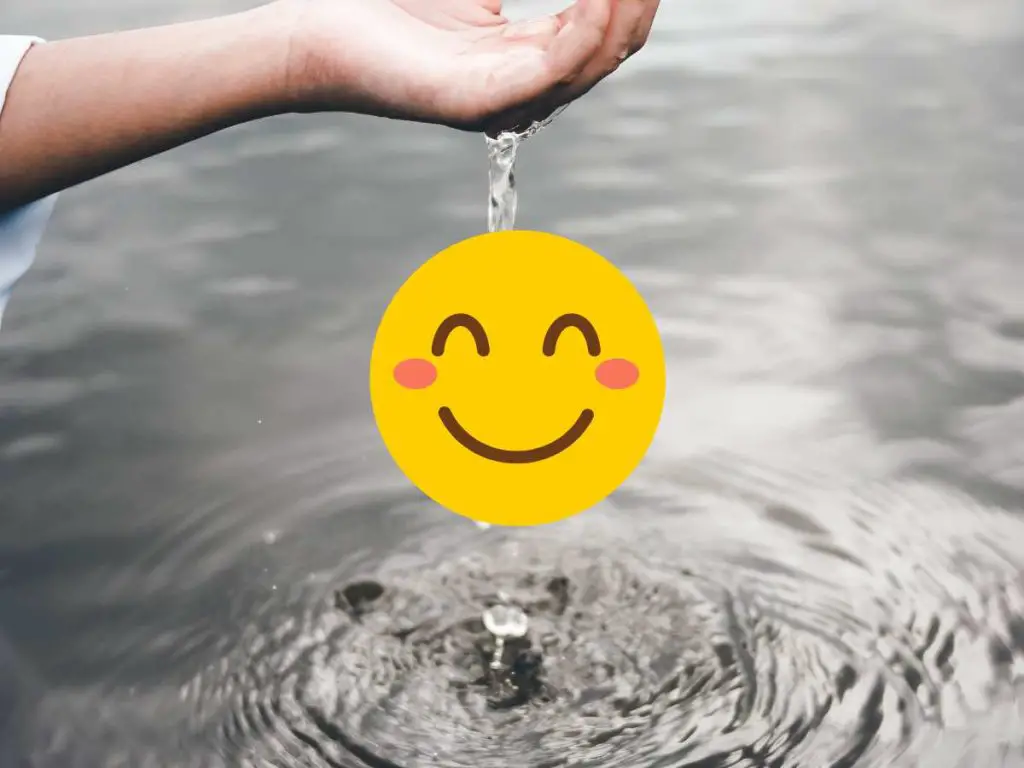
Regular Water Testing
Water quality is critical to the health of your koi fish. Frequent water testing can alert you to any imbalances or spikes in ammonia, nitrite, or nitrate levels, allowing you to make adjustments before they become a problem. Invest in a good water testing kit for your pond. We recommend one that includes testing strips for quick and easy testing.
Skimming and Cleaning
Regular skimming of leaves and debris from the surface of the water will reduce the need for extensive cleaning. It’s essential to remove anything that falls on the surface promptly. Waiting too long can cause deteriorating organic matter and can release damaging minerals and toxic gases into the water. Also, be sure to use a vacuum to clean the bottom of the pond. The debris can accumulate and release ammonia into the water.
Proper Filter Maintenance
Your pond filter is responsible for maintaining a healthy aquatic habitat. Be sure to clean and replace filter pads regularly. This will prevent a buildup of debris, which can reduce the filtration capacity of the filter. A well-kept filter will ensure that the pond remains clean and habitable for your koi.
Aeration Equipment Maintenance
Aeration is essential for providing your fish with the necessary oxygen and helps maintain the overall health of the pond. Be sure to maintain aeration equipment, including your diffusers, air pumps, and stone aerators. Any equipment malfunction can impact the oxygen levels, which can cause stress and even death to your koi fish.
Seasonal Maintenance
Seasonal maintenance is crucial to preparing your pond for any upcoming season. During the fall, your pond will require preparation for colder temperatures. You should consider stopping feeding your fish regularly, cleaning and covering your pond with a net to minimize falling leaves debris. In the summer, be sure to keep an eye on the water levels and add water as needed. A well-maintained pond is critical to creating a healthy, beautiful outdoor oasis.
Foam Go Home!
Thanks for making it to the end of this article on foam in koi ponds! We’ve covered a lot of ground, including what foam is, what causes it, and how to fix and prevent it. Here’s a quick rundown of the main points we’ve discussed:
- Foam in koi ponds can be caused by overfeeding, algae bloom, poor water quality, use of chemicals, and insufficient aeration.
- Regular skimming, water changes, use of beneficial bacteria, algaecides, and proper aeration can help fix a foamy koi pond.
- Proper feeding, regular cleaning and maintenance, monitoring water quality, limiting chemical use, and using aeration equipment can help prevent foam from forming in the first place.
- It’s important to care for koi fish in a foamy pond by monitoring their behavior, feeding them properly, maintaining good water quality, treating any sick fish, and consulting with a vet if necessary.
- Regular testing, skimming and cleaning, proper filter maintenance, aeration equipment maintenance, and seasonal maintenance are all important for koi pond upkeep.
Remember, maintaining a healthy koi pond requires attention and effort, but it’s worth it to keep your fish happy and thriving. If you follow the tips and suggestions in this article, you should be well on your way to a foam-free and healthy pond for your beloved koi fish.
Related Questions
Can foam harm my koi fish?
Yes, foam in koi ponds can be harmful to the health of your koi fish. It can decrease the dissolved oxygen levels in the water, making it difficult for fish to breathe, and it can also increase the level of harmful chemicals like ammonia and nitrite, which can be toxic to fish. It’s important to address the causes of foam in your pond to maintain good water quality and keep your fish healthy.
How can I test my water quality in a koi pond?
You can test the water quality in your koi pond using a water testing kit. These kits typically measure parameters like pH, ammonia, nitrite, and nitrate levels in the water. Regular testing can help you identify any imbalances or issues with the water chemistry before they become a problem for your fish. It’s important to follow the instructions carefully when using testing kits to get accurate results.



